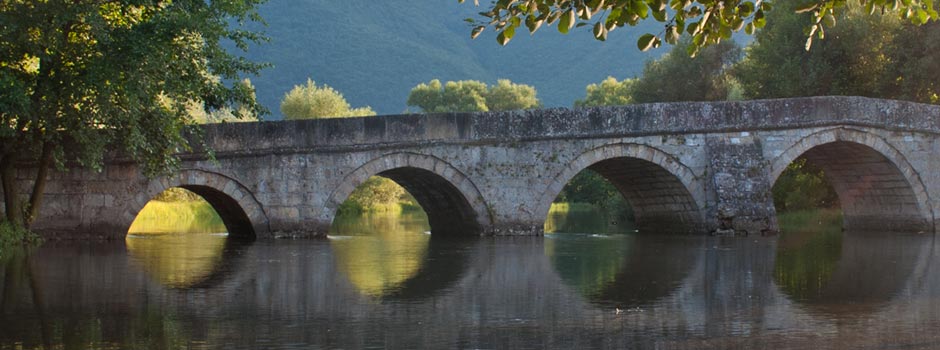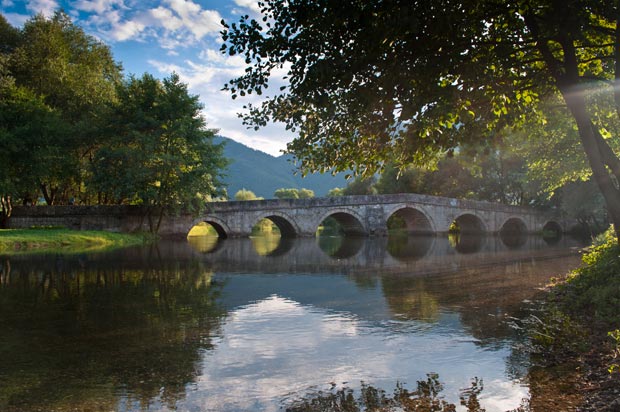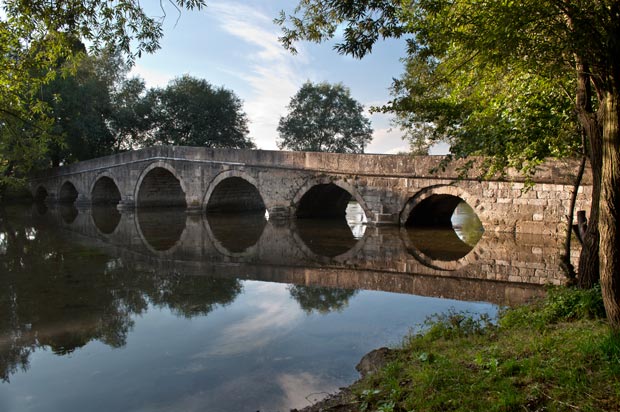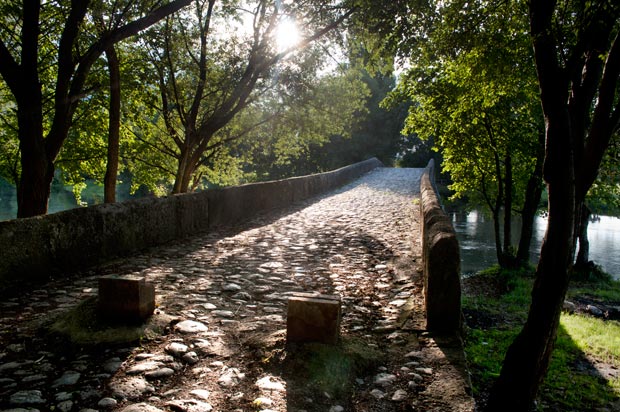
Bosnian snapshot The Old Ottoman Bridge at Plandiste in Sarajevo
May 27, 2019 FEATURE, Art History
 The old Ottoman bridge in Sarajevo, also known as the "Roman Bridge" / Photo by Islamic Arts Magazine
The old Ottoman bridge in Sarajevo, also known as the "Roman Bridge" / Photo by Islamic Arts Magazine
Sarajevo, the capital of Bosnia and Herzegovina, was the European center of Islamic culture and the arts for more than 450 years. During that period an enormous number of religious and secular buildings were constructed. The Sarajevo mosques from the Ottoman period are somewhat known to the general public —there are more then 60 mosques over 400 years old— but other types of buildings and structures, especially the bridges, are little known.
 The old Ottoman bridge in Sarajevo, the other side / Photo by Islamic Arts Magazine
The old Ottoman bridge in Sarajevo, the other side / Photo by Islamic Arts Magazine
Because Sarajevo is traversed by three rivers: —the Miljacka, the Bosna and the Željeznica— it is not surprising that in Ottoman times a dozen bridges connected the different parts of the city. Those bridges made of wood perished. Out of the six bridges made of stone only four remain.
One of them is the old Ottoman bridge at Plandište. It was built over the Bosna in the first half of the 16th century. The bridge is also known as the "Roman Bridge" for two reasons. First, a bridge was constructed on a path which, in a Roman time, was a part of a Roman road. Second, the structure of the bridge contains one stone, which a relief preserved on it dates back to the ancient Roman period. It probably once formed a part of a nearby building.
 The old Ottoman bridge in Sarajevo, the other view / Photo by Islamic Arts Magazine
The old Ottoman bridge in Sarajevo, the other view / Photo by Islamic Arts Magazine
 The old Ottoman bridge in Sarajevo, the detail / Photo by Islamic Arts Magazine
The old Ottoman bridge in Sarajevo, the detail / Photo by Islamic Arts Magazine
The bridge is not monumental but is nonetheless aesthetically pleasing, particularly due to elegance of how it fits perfectly into its natural environment. Built of cut limestone, it possesses seven arches. The landmark bridge at Plandište spans 52 m; it is 4.5 m wide and 4.5 m tall at its highest or middle point.
 The amazing view from the old Ottoman bridge in Sarajevo / Photo by Islamic Arts Magazine
The amazing view from the old Ottoman bridge in Sarajevo / Photo by Islamic Arts Magazine
It is not certain who built the bridge. Some claim the patron was Rustem Pasha, the Grand Vizier of the Ottoman Empire, while others argue that it could also have been Semiz Ali Pasha or Gazi Ali Pasha.
The most significant reconstruction of the bridge was undertaken in 1762, when the city officials approved its repair due to deterioration. Today, this bridge stands as one of the symbols of Sarajevo and catches the eyes of everyone who visits the town from the south side.
Comments
Jan 30, 2015 - 7:00:43
Important addition to info - so, river is the Bosna (or Bosnia in English), while bridge itself is situated some six hundred meters from its well-spring, which is also famous Sarajevo outdoor & picnic site, but also protected Nature Park “Vrelo Bosne”.
But, maybe the most remarkable fact is that water in the river under and around the bridge is crystal clear and freezing cold, and most importantly potable, as well as full of brown trout, huchen and grayling !
Add a comment